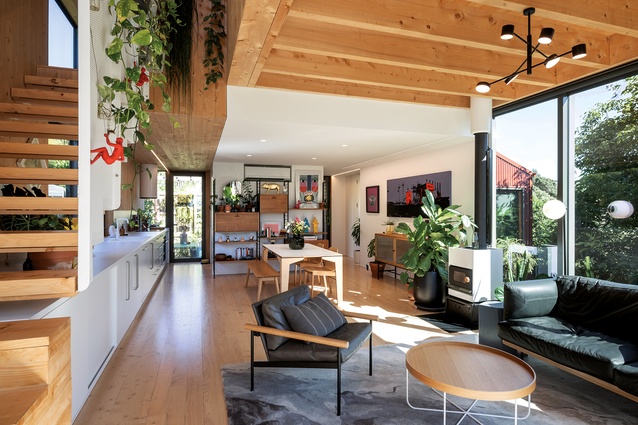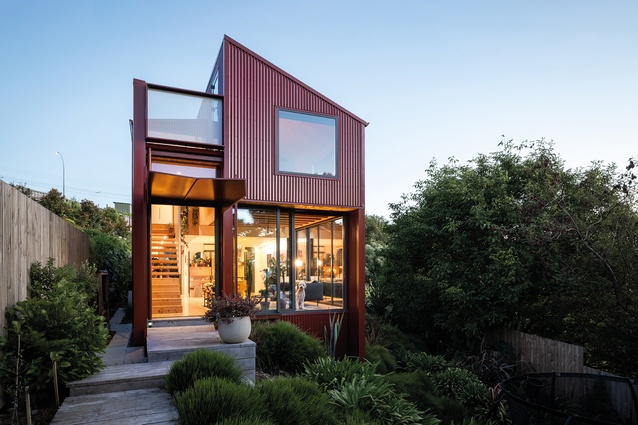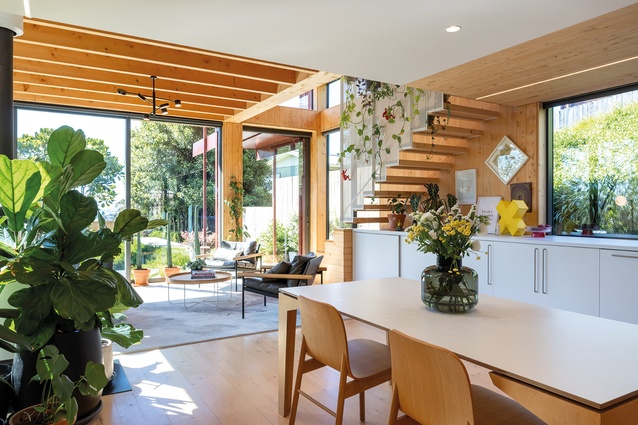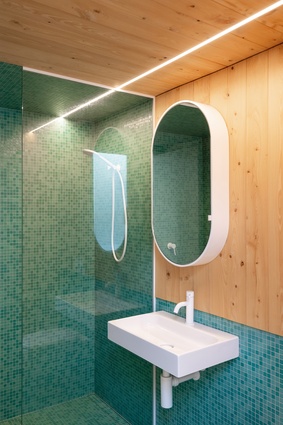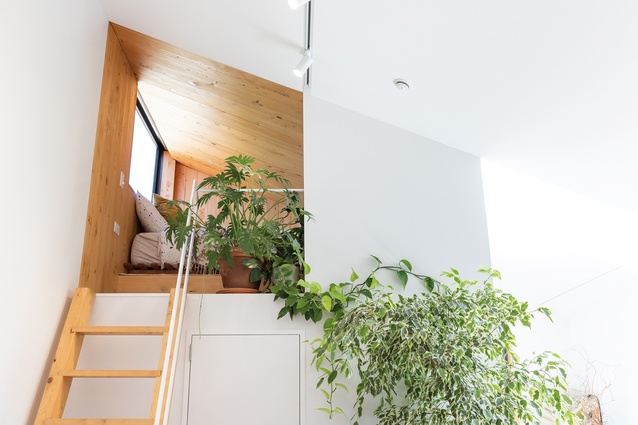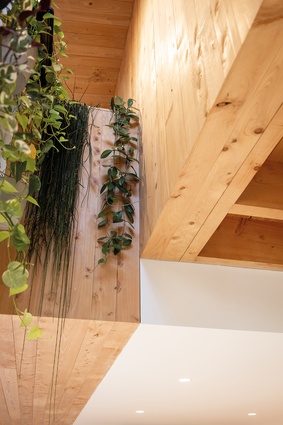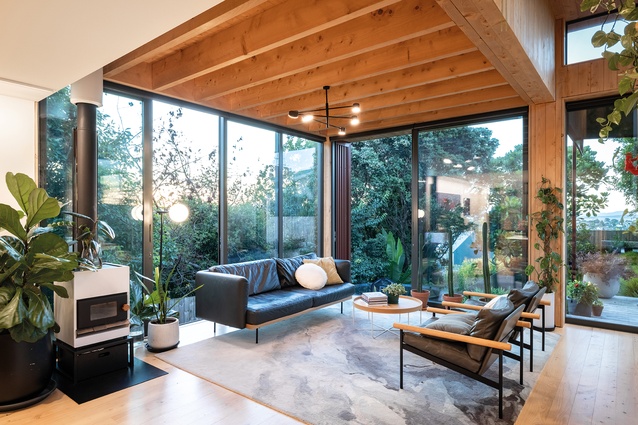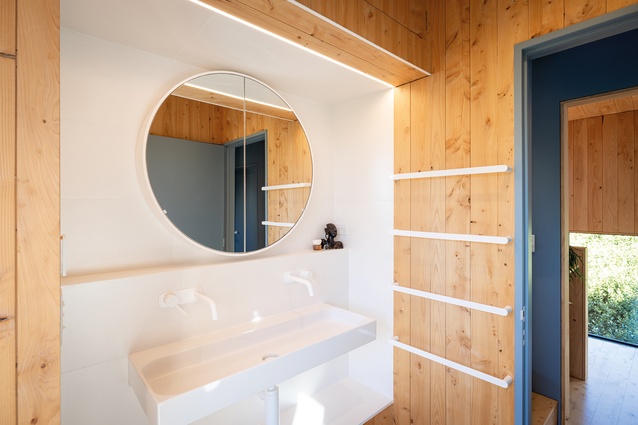Interior Spaces: Life amongst the trees
Beneath the fresh, Scandi vibe of this modest Stufkens + Chambers-designed family home — a finalist in this year’s Interior Awards — is a strong sense of social and environmental awareness. Amanda Harkness finds out more.
For many, it’s a long-held dream to build your own home from the ground up but, with that, comes responsibility: to balance personal needs with those of the environment.
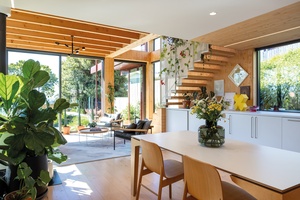
When designing House on a Hill in Tauranga, owner and architect Steven Chambers wanted to engage positively with the complex emotional and sensory needs of the family’s two neurodiverse children while also ensuring a sustainable use of materials, minimal waste and reduced ongoing maintenance requirements.
The building is split along the axis of the historical farm access track it occupies, the design integrating with the landscape and embracing its surroundings. “The house draws its inspiration from the site’s rural past,” explains Chambers, “paying homage through the use of claddings reminiscent of vernacular red sheds.”
While privacy from the street is paramount, the home opens up along strategic axes, revealing the towering trees which surround it as well as views of the harbour. Despite its modest footprint, there is both a sense of spaciousness and one of intimacy, with varying ceiling heights creating a dynamic interplay of volume and light.
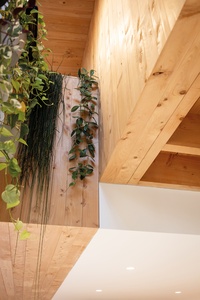
“The house needed to provide a range of spatial experiences, both expansive and contained, and imbue a sense of calm,” says Chambers. Lawson cypress timber is left unsealed, engaging the senses as it breathes and exudes its natural fragrance, and other interior softwood timbers were intentionally selected to age gracefully and bear the marks of time, weaving a narrative of the occupants’ lives into the fabric of the home.
In a house where every surface had to respond to the primary senses of touch, sight, smell, sound and taste, Chambers also considered the vestibular and proprioception senses — an awareness of movement, balance and coordination, and body awareness and position in the space around us. “These elements of the build express a richer way of experiencing architecture and space through a full body experience,” he says. “I call it an ‘wholistic’ approach.”
With its floating perforated stair, carefully detailed planar junctions and colour thoughtfully chosen for its calming qualities, there is much to be celebrated in this deceptively simple yet deeply responsible design. And wouldn’t we all like to live amongst the trees?
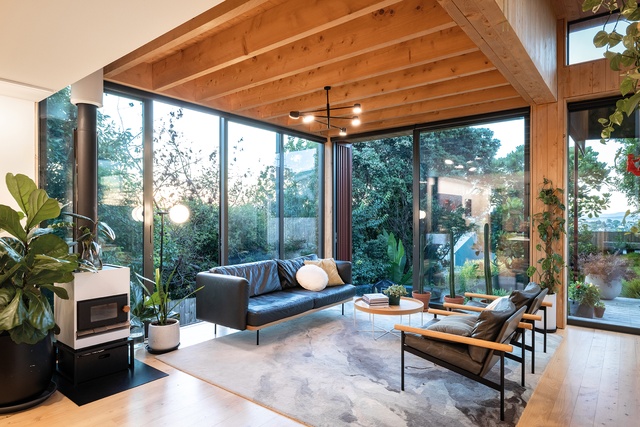
The Interior Spaces series is brought to you by GIB® in partnership with ArchitectureNow. Find helpful video content on how to install GIB® Wet Area Systems and learn more about GIB Aqualine® here and in the video below.
ArchitectureNow works with a range of partners in the A&D supply sector to source appropriate content for the site. This article has been supported by GIB®.


